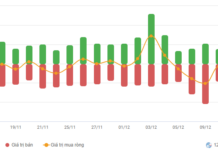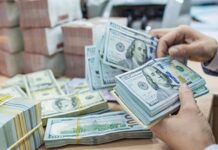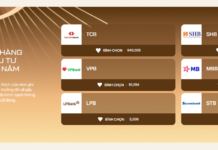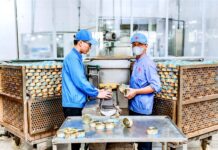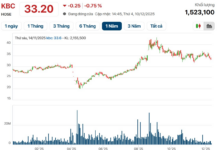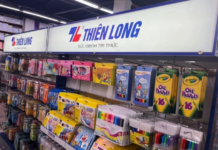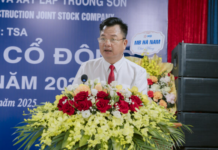Figures from the Vietnam Rubber Association (VRA) show that Vietnam’s natural rubber exports in 2023 reached 2.1 million tons, valued at $2.9 billion. In contrast, the country imported nearly 1.4 million tons, worth almost $1.4 billion. In the first four months of 2024, exports reached 499,000 tons, valued at $743 million, while imports were estimated at over $360 million.
DOMESTIC SUPPLY ONLY MEETS 40% OF DEMAND
According to Mr. Vo Hoang An, Secretary-General of the Vietnam Rubber Association (VRA), the increase in natural rubber imports is a positive development. A decade ago, the industry’s exports mainly comprised natural rubber. Today, Vietnam has become a hub for processed rubber products.
Vietnam is now a leading rubber processing and export hub in Asia. The country’s rubber plantations cover approximately 940,000 hectares, producing about 1.3 million tons of latex annually. However, this only meets 40% of the processing demand, necessitating the import of raw rubber for further processing into value-added products for export.
Mr. An also noted that the Ministry of Agriculture and Rural Development’s annual rubber export figures only include natural rubber products like fresh latex, coagulated latex, and semi-processed latex.
“In reality, the total export turnover of the rubber industry in 2023 exceeded $9.4 billion. Among these, processed rubber products accounted for the highest turnover, at $4.4 billion, followed by natural rubber at nearly $2.9 billion and rubberwood at $2.2 billion.”
Mr. Vo Hoang An, Secretary-General, Vietnam Rubber Association (VRA)
In contrast, the actual exports of the rubber industry should include natural rubber, processed rubber products, and rubberwood.
The group of processed rubber products includes tires, mattresses, shoe soles, gloves, elastic threads, etc. Tires are the most exported product, with an estimated value of over $2.5 billion in 2023, accounting for 58.1% of the total export turnover of rubber products, mainly exported to the US market.
The export turnover of rubber products to the EU was estimated at nearly $375.3 million, accounting for 8.6% of the total export value, of which tires were the most exported at $268.2 million.
At the recent online workshop “Reality of Vietnam’s Rubber Supply Chain: Preparing to Meet EU Anti-Deforestation Regulations,” Dr. To Xuan Phuc, Executive Director of Forest Trends’ Policy, Trade, and Finance Program, said that Vietnam imports natural rubber from about ten countries.
Cambodia and Laos are the most important sources, accounting for 79.8% and 11.1%, respectively, of the total natural rubber imports into Vietnam. In 2022, Vietnam imported 1.4 million tons of natural rubber from Cambodia, worth $1.5 billion. The supply from Cambodia has increased significantly, from 432,000 tons in 2020 to 1.33 million tons in 2021.
Forest Trends’ survey shows that most of the natural rubber imported from Cambodia into Vietnam is unprocessed and is often in the form of coagulated latex or wet latex sourced from smallholder households. For semi-processed rubber, the common products include RSS and TSR, which are produced by Vietnamese companies investing in rubber plantations in Cambodia and then shipped back to Vietnam.
MAIN IMPORT SOURCES: CAMBODIA AND LAOS
Currently, 48 Vietnamese companies are investing in rubber plantations in Cambodia. The Cambodian government has allocated over 200,000 hectares of land to these companies for rubber cultivation. Of these, the Vietnam Rubber Group (VRG) has 16 member companies investing in Cambodia, with a planting area of about 90,000 hectares.
In 2022, Vietnam imported nearly 200,000 tons of natural rubber from Laos, worth nearly $242 million, a significant increase from 140,500 tons and $106.4 million in 2020. From 2019 to 2022, Vietnam imported an average of more than 130,000 tons of natural rubber from Laos annually. Vietnam mainly imports semi-processed natural rubber from Laos that meets Vietnamese technical standards, including technically specified rubber blocks (SVR, SLR) and mixed rubber.
Currently, Laos’s natural rubber supply comes from three main sources. First, there is the large-field rubber of FDI enterprises (from China, Thailand, and Vietnam). These are projects granted land by the Lao government for rubber development. Of the 70,000 hectares of rubber planted by Vietnamese enterprises in Laos, the Vietnam Rubber Group (VRG) and Hoang Anh Gia Lai Group own the majority.
Second, there is the large-field rubber of Lao enterprises. And third, there is the small-field rubber grown by households.
The article was published in the Vietnam Economic Magazine, Issue 22-2024, released on May 27, 2024. Please find the full article here: https://postenp.phaha.vn/chi-tiet-toa-soan/tap-chi-kinh-te-viet-nam

(Source: Vietnam Rubber Association)




